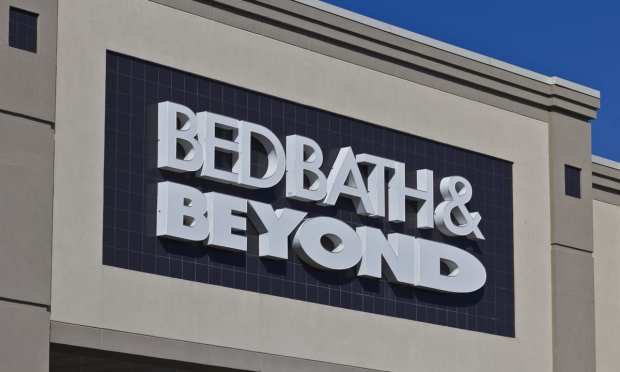Bed Bath & Beyond Bides Time Amid Bare Shelves and Dwindling Cash

One week after Bed Bath & Beyond (BBBY) warned investors that bankruptcy was being considered, the ailing home goods retailer brought more bad news to shareholders Tuesday (Jan 10).
This, as the New Jersey-based operator of 950 stores said its delayed third-quarter results for the three months ended Nov. 26 reflected wider losses and a dwindling cash crunch that some analysts have said could run out within two months.
On a call with investors, CEO Sue Gove shed light on the squeezed-from-all-sides scenario that BBBY is facing as it pleads with vendors to keep providing inventory under increasingly bad terms, while struggling to give loyal customers a reason to come back to its understocked stores, and works with advisors on turn-around plans that include every strategic option.
“We experienced an acceleration in vendor payment terms and credit line constraints [in Q3], and this led to lower receipts and therefore lower in-stock levels in the 70% range, which hampered our sales further in an already competitive environment,” Gove said of the quarter, which saw sales fall 33% enroute to a net loss of $392 million.
Gove said BBBY has worked diligently with its supplier partners and has been able to deliver a sequential decline in accounts payable balances, which she said, “remain at healthy levels,” alongside continued cost cuts, headcount reductions and 150 store closures.
While no Q4 sales details were given, Gove said the retailer has “already leveraged the liquidity gain from the holiday season to pursue more inventory and higher in-stock levels,” noting that additional efforts are underway to further increase inventory.
“We have a team, internally and externally, with proven experience helping companies successfully navigate complex situations and become stronger,” Gove said. “Multiple paths are being explored, and we are determining our next steps thoroughly, and in a timely manner.”
What Went Wrong?
To be sure, the demise of the 52-year-old retailer has caught many by surprise as the chain had been a category stalwart since its founding in the early 1970s and subsequent expansion into its buybuy Baby and Harmon brands.
Arguably, one thing that didn’t exist in those early BBBY days was Amazon, which has grown to dominate eCommerce and home delivery and has seen its share of the domestic furniture and home furnishing segment top 10%, PYMNTS data shows, making it one of the retail giant’s top three categories.
While Gove did not specifically call out BBBY’s digital shortcomings, she did tell investors that the beleaguered brand recognized and embraced the fact that its customers shop differently today, saying they visit stores less frequently, and when they do visit a store, they have higher expectations around service, engagement and assortment.
“They want an omni experience that we are committed to deliver,” Gove said. “Ease of shopping is critical, and we are committed to delivering such services as BOPIS and same day shipping … and we are listening to our customers and are swiftly enacting improvements to their experience.”
Although BBBY is using internal and external advisors to urgently reorganize and streamline the business, the question remains whether this change can happen quickly enough, to use BBBY’s own term, to remain a “going concern.”
“We are implementing our plan expeditiously while managing our financial position in a changing landscape,” Gove said.
“We want our customers to know that we hear them and are charging ahead every day to meet their needs,” she added, saying the entire organization is laser-focused on maximizing the value of the company.
For all PYMNTS retail coverage, subscribe to the daily Retail Newsletter.
